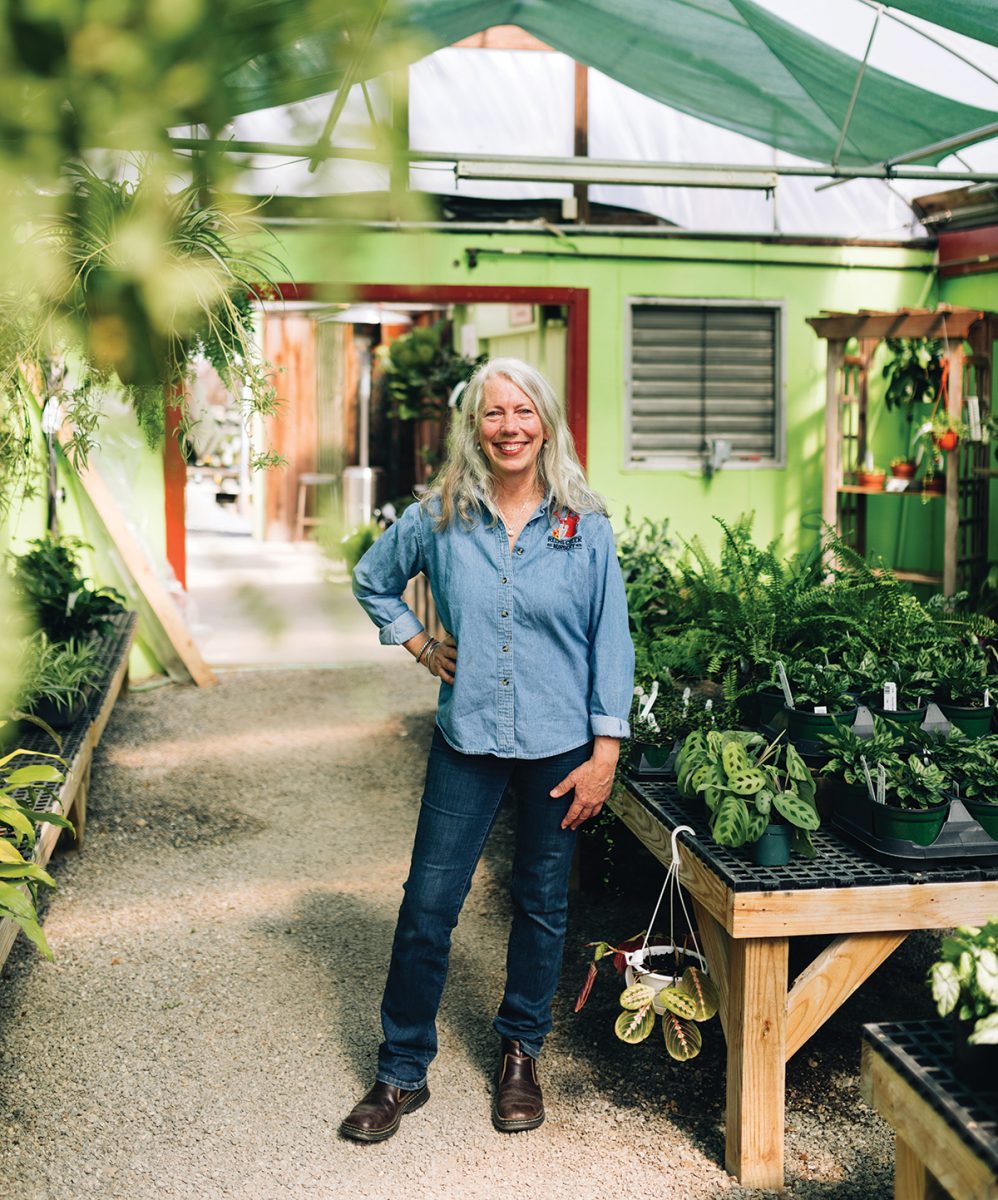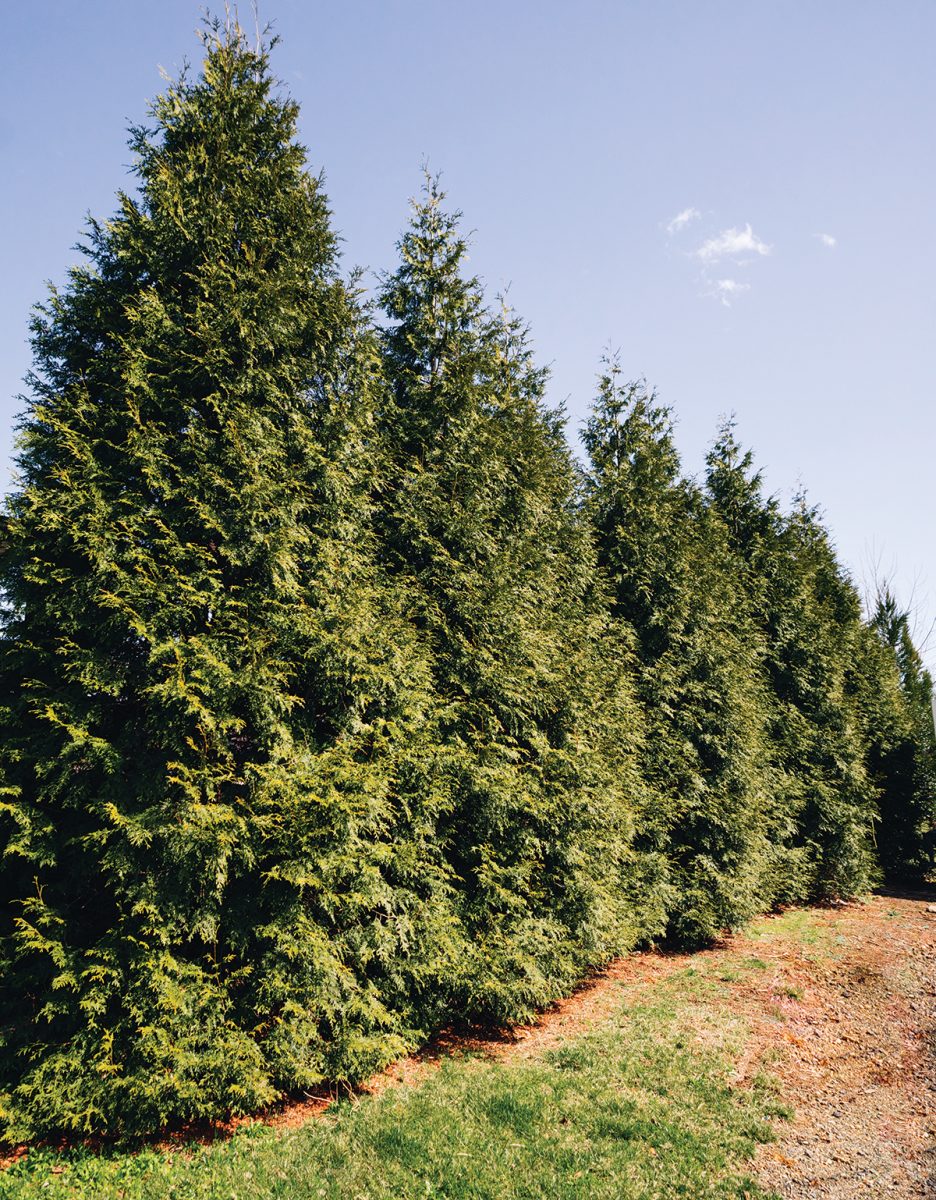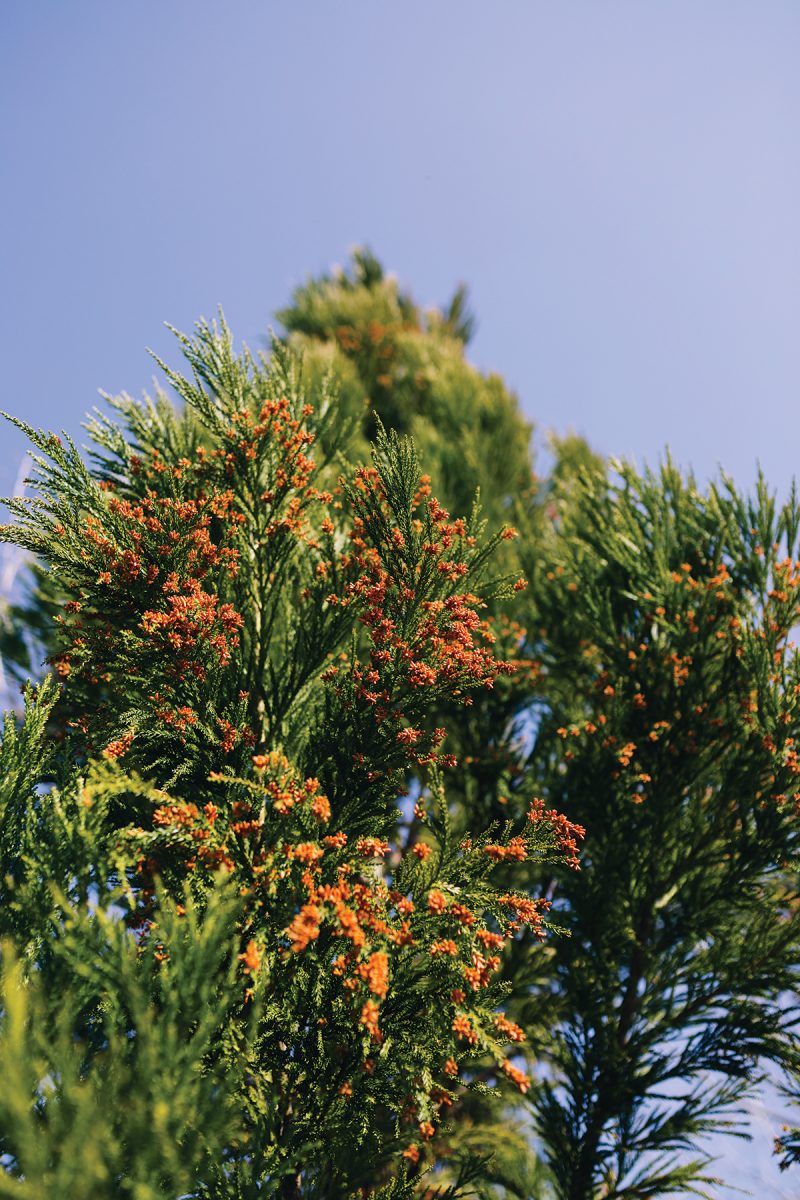How to create outdoor seclusion with the right shrubs and trees

Photo by Rachel Pressley
It became clear last spring that COVID-19 wasn’t going away anytime soon, so folks took to their yards, the only safe places to gather with loved ones who didn’t share a household. It makes sense, then, that people are tricking out their property just like they’ve feverishly taken on home-improvement projects. Preserving privacy is central, especially in urban areas where yards abut with little barrier.
Here, two gardening pros share wisdom about how to naturally add that secluded feel to the back 40 (or the back .25). Ruth Gonzalez has been guiding clients at Reems Creek Nursery for 18 years. Her areas of expertise include organic gardening and sowing pollinator habitat. Landscape Contractor E. V. vonSeldeneck owns Mantis Gardens, the firm responsible for some of Asheville’s loveliest yards.

Photo by Rachel Pressley
Are there more outdoor residential privacy screening requests now?
E.V. vonSeldeneck: Honestly, that’s consistently our number-one request — even before COVID. … Outdoor privacy is coveted because, lately, houses are built on most every empty piece of buildable land.
Ruth Gonzalez: We’ve seen an uptick in hedge plant sales, but I’m not sure if it’s pandemic related, since so many are moving into the area.

Photo by Rachel Pressley
What are popular types of natural privacy fencing?
RG: Our top two hedge plants are Green Giant Arborvitae and Skip Laurel. Green Giant is fast growing to 40 feet tall x 15 feet wide, and Skip Laurel is a fast-rowing broadleaf evergreen that grows to 12 feet high. … Holly trees are slow-growing evergreens with red berries if a pollinator is present. Nellie Stevens Holly, Foster Holly, and American Holly are examples of hollies with sizes ranging from 15 to 30 feet tall. … Vines on a trellis are a great privacy alternative where space is an issue, especially at the end of a porch, patio, deck, or apartment balcony. Two native vines are Crossvine [semi-evergreen with orange tubular flowers], and in lower elevations, Carolina Jessamine [evergreen with yellow tubular flowers].
EVVS: Endless creative variations of natural privacy fences exist — Pinterest proves this. For our natural green fences, we tend to use all plant material, sometimes a combination of a traditional fence with plants growing in front of it and vines growing on it. We may alternate down a property line, using metal or wood fence sections and screening plants.
Fast-growing Leyland Cypress creates barriers between properties. What about bamboo?
EVVS: We try to discourage clients from Leyland Cypress due to its size, since most of the properties we work with are within Asheville’s city limits and tight. We also favor the Skip Laurel. They’re evergreen, with fragrant and beautiful blooms in spring that pollinators adore, and they’re manageable size-wise. You can easily prune to keep them 6-10 feet high, or let them go to the 15- to–20-foot range. Their dense foliage creates great nesting spots for birds.
We also use Green Giant Thuja, hollies, Cryptomeria, Southern Magnolia, and Camellia. We work in a variety of deciduous native flowering shrubs to add to the diversity and interest in a privacy line, and we avoid invasive bamboo like the plague.
RG: We recommend Green Giant Arborvitae as an alternative to Leyland Cypress. It grows as quickly as Leyland Cypress, but is less troubled by disease and less likely to break under a snow load. Running Bamboo is very invasive and won’t be appreciated by your neighbors — it’s very aggressive after a few years.
Do your solutions depend much on whether the yard is large, postage stamp-sized, just a small deck or patio?
RG: Always consider available space. Trellis and vine takes up less space and is a different vibe.
EVVS: Privacy solutions vary a lot based on yard size and factors such as the angle, light, and space for the long-term mature size of the plants. Clients may want screening to obscure a recently built commercial building, which happens frequently in Asheville now, or a client with a balcony doesn’t want to look down into their neighbor’s unattractive driveway.
Are you sensing excitement about gardening after this tough pandemic winter?
EVVS: People do seem excited … they’re looking into additions like patios, screen plantings, and water features.
RG: Every year springtime renews optimism, but this year, visiting with friends outdoors again will be especially delightful.
Any other expert tips?
RG: Always, right plant, right place. If you put a sun-loving plant in the shade, it won’t thrive. Water newly planted trees and shrubs deeply twice a week the first year, and during dry spells after that.
EVVS: Timing’s everything. It takes quite some time for plants to fill in, no matter how big they are when they go in or how closely planted they are. Don’t wait to get started.
Reems Creek Nursery, 76 Monticello Road, Weaverville, reemscreek.com. Mantis Gardens, Asheville, mantisgardens.com.
